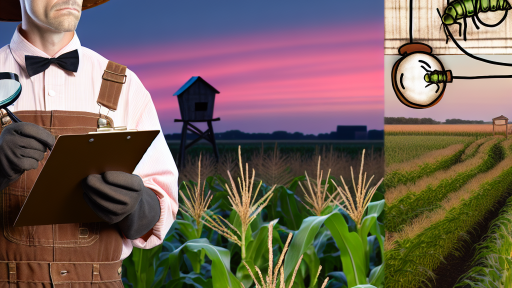Implementing Drip Irrigation Systems for Efficient Water Application
Overview of Drip Irrigation
Drip irrigation delivers water directly to the roots of plants.
This method minimizes evaporation and runoff.
Farmers can use less water while achieving better crop yields.
Benefits of Drip Irrigation
Drip irrigation offers several significant benefits.
First, it reduces water usage efficiently.
Second, it enhances crop productivity.
Third, it lowers the risk of soil erosion.
Finally, it can improve fertilizer efficiency.
Key Components of a Drip Irrigation System
Understanding the components is vital for effective implementation.
- Emitters release water at controlled rates.
- Supply tubing directs water from the source to the field.
- Filters keep the system free from debris.
- Pumps help maintain required pressure and flow.
Installation Steps for Drip Irrigation
Installing a drip irrigation system involves several steps.
First, assess your field and water source.
Next, plan the layout of tubes and emitters.
Then, install the mainline and sub-main lines carefully.
After that, connect the emitters at proper intervals.
Finally, test the system for leaks and proper function.
Transform Your Agribusiness
Unlock your farm's potential with expert advice tailored to your needs. Get actionable steps that drive real results.
Get StartedMaintenance of Drip Irrigation Systems
Regular maintenance ensures effective operation.
Inspect the system for clogs or leaks regularly.
Clean filters to prevent debris buildup.
Adjust emitter flow rates based on plant growth stages.
Monitor soil moisture levels to optimize water application.
Selecting Native and Drought-Resistant Crop Varieties
The Importance of Native Varieties
Native crops are well-adapted to local climates.
They often require less water than non-native species.
Additionally, these crops support local ecosystems effectively.
Benefits of Drought-Resistant Varieties
Drought-resistant crops use water more efficiently.
They thrive even in low-water conditions.
Farmers can achieve higher yields with these varieties.
Researching Local Options
Study which native varieties grow best in your area.
Consult local agricultural extensions for recommendations.
Agronomists can provide valuable insights and resources.
Implementing Crop Rotation
Rotating crops enhances soil health and increases resilience.
This practice reduces pest and disease risks.
Moreover, it optimizes water usage throughout the seasons.
Utilizing Technology for Selection
Modern technology can assist in crop selection.
Soil moisture sensors help identify water needs.
Data analytics can predict which varieties perform best.
Utilizing Soil Moisture Sensors for Optimal Irrigation Timing
Introduction to Soil Moisture Sensors
Soyl moisture sensors are essential tools in modern farming.
They enable farmers to monitor soil water content accurately.
By using these sensors, farmers can optimize their irrigation practices.
Benefits of Soil Moisture Sensors
These sensors help reduce water consumption significantly.
Showcase Your Farming Business
Publish your professional farming services profile on our blog for a one-time fee of $200 and reach a dedicated audience of farmers and agribusiness owners.
Publish Your ProfileThey allow precise scheduling of irrigation events.
Consequently, this improves crop health and yields.
Types of Soil Moisture Sensors
Various types of soil moisture sensors are available on the market.
Capacitive sensors detect changes in soil moisture levels accurately.
Resistive sensors measure the electrical resistance of soil.
Time Domain Reflectometry (TDR) sensors provide reliable measurements as well.
Implementing Soil Moisture Sensors
First, identify the specific needs of your crops.
Next, select the appropriate sensor type based on soil conditions.
Then, install sensors at different soil depths.
This allows you to monitor moisture levels more effectively.
Integrating Sensors with Irrigation Systems
Integrating moisture sensors with irrigation systems is a crucial step.
This automation can optimize water distribution based on real-time data.
Additionally, many systems now support mobile applications for monitoring.
Interpreting Sensor Data
Understanding sensor data is vital for effective irrigation management.
Analyze moisture readings to make informed decisions.
Utilize data to adjust irrigation schedules and amounts.
Promoting Sustainable Farming with Sensors
Implementing soil moisture sensors enhances water conservation efforts.
These tools can lead to sustainable farming practices.
Ultimately, embracing technology improves agricultural productivity.
Delve into the Subject: Effective Strategies for Integrated Pest Management
Practicing Rainwater Harvesting Techniques to Supplement Water Supply
Understanding Rainwater Harvesting
Rainwater harvesting captures and stores rain for future use.
It serves as a sustainable alternative to traditional water sources.
Farmers can use this method to reduce reliance on groundwater.
Benefits of Rainwater Harvesting in Farming
This practice promotes water conservation and sustainable agriculture.
It helps reduce soil erosion by managing stormwater effectively.
Moreover, it can significantly lower water costs for farmers.
Implementing Rainwater Harvesting Systems
Farmers should assess their site’s rainfall levels and patterns.
Next, they can select appropriate storage tanks and materials.
Afterward, installation of gutters and downspouts is essential.
Additionally, regular maintenance ensures efficient water collection.
Types of Rainwater Harvesting Techniques
There are several methods for harvesting rainwater.
- Roof catchment systems capture rain from building rooftops.
- Surface runoff approaches collect water from land surfaces.
- Subsurface systems store water below ground for access.
Each method has particular advantages to fit various farming needs.
Using Collected Rainwater Effectively
Farmers can use harvested rainwater for various applications.
It is beneficial for irrigation, especially during dry spells.
Additionally, it can serve livestock watering needs and crop treatments.
Careful monitoring helps ensure safe and effective use of this resource.
Delve into the Subject: Integrated Pest Management: Eco-Friendly Farming Tips
Adopting Crop Rotation to Improve Soil Health and Water Retention
Understanding Crop Rotation
Crop rotation involves alternating different crops on the same land over time.
This method enhances soil fertility and biological diversity.
Additionally, it optimizes water use by improving soil structure.
Showcase Your Farming Business
Publish your professional farming services profile on our blog for a one-time fee of $200 and reach a dedicated audience of farmers and agribusiness owners.
Publish Your ProfileBenefits of Crop Rotation for Water Retention
First, diverse root systems help to break up soil compaction.
As a result, water infiltrates the soil more effectively.
Moreover, certain crops require less water due to their growth habits.
This leads to decreased overall water use in farming.
Promoting Soil Health through Diversity
Incorporating a variety of crops prevents nutrient depletion.
Crops like legumes enhance nitrogen levels in the soil.
This enriches the soil and supports subsequent crops’ growth.
Consequently, healthier soil retains moisture better.
Implementing Effective Crop Rotations
Plan rotations based on local climate and soil conditions.
Combine deep-rooted and shallow-rooted crops for balance.
For example, follow grains with legumes or cover crops.
Additionally, consider planting drought-resistant varieties.
Monitoring and Adapting Practices
Regular monitoring of soil moisture is essential.
Use soil tests to determine nutrient availability.
Adapt rotations based on observed results and conditions.
This strategy ensures sustainable water use over time.
See Related Content: Rainwater Harvesting Techniques for Farmers

Incorporating Cover Crops to Enhance Soil Moisture Conservation
Understanding Cover Crops
Cover crops are plants grown primarily for soil health benefits.
They prevent soil erosion and improve structure.
In addition, they boost organic matter content in the soil.
Moreover, cover crops can enhance moisture retention significantly.
Benefits of Cover Crops
Implementing cover crops offers various advantages for moisture conservation.
- They reduce evaporation from the soil surface.
- Cover crops help in capturing and storing rainwater.
- They improve soil organic matter, enhancing moisture-holding capacity.
Types of Effective Cover Crops
Specific cover crops are particularly effective for moisture conservation.
- Legumes, such as clover, fix nitrogen and enhance soil fertility.
- Brassicas, like radishes, aid in breaking up compacted soil layers.
- Grasses, such as rye, create dense root systems that improve water infiltration.
Best Practices for Implementation
To maximize the benefits of cover crops, farmers should follow best practices.
- Choose cover crops that suit local climate conditions.
- Plant cover crops after the main harvest to utilize fallow periods.
- Avoid using cover crops that compete excessively with main crops.
Monitoring and Evaluation
Regular monitoring is crucial to evaluate the effectiveness of cover crops.
Farmers should assess changes in soil moisture levels over time.
Additionally, they need to observe the impact on crop yields.
Adjustments in cover crop strategies may be necessary based on these evaluations.
Impacts of Cover Crops on Sustainable Farming
Incorporating cover crops effectively enhances soil moisture conservation.
They provide various agronomic benefits while reducing water use in farming.
Ultimately, adopting cover crops contributes to sustainable agricultural practices.
Find Out More: Recycling Organic Materials for Soil Health
Utilizing Mulching Techniques to Reduce Evaporation Losses
Understanding Mulching
Mulching involves covering the soil surface with various materials.
This technique helps conserve moisture in the soil.
It also reduces evaporation during hot weather.
Types of Mulches
- Organic mulches include materials like straw, bark, and leaves.
- Inorganic mulches include plastic and gravel.
- Each type has unique benefits for soil health and moisture retention.
Benefits of Mulching
Mulching significantly reduces the need for frequent irrigation.
It also suppresses weed growth, reducing competition for water.
Furthermore, mulches can improve soil structure over time.
Choosing the Right Mulch
Selecting the appropriate mulch depends on the crop and climate.
For example, wood chips work well in cooler regions.
Showcase Your Farming Business
Publish your professional farming services profile on our blog for a one-time fee of $200 and reach a dedicated audience of farmers and agribusiness owners.
Publish Your ProfileConversely, plastic works better in warmer climates.
Application Techniques
Apply mulch after planting to protect young plants.
Ensure a depth of 2 to 4 inches for optimal coverage.
Moreover, keep mulch away from plant stems to prevent rot.
Monitoring and Maintenance
Regularly check mulched areas for nutrient depletion.
Supplement organic mulches as they break down over time.
In addition, maintain proper moisture levels to enhance effectiveness.
Employing Precision Agriculture Technologies for Water Management
Understanding Precision Agriculture
Precision agriculture utilizes technology to optimize field-level management.
This approach enhances crop yield while minimizing resource use.
Farmers can target specific areas for watering based on actual needs.
Benefits of Precision Irrigation
Precision irrigation applies water more efficiently than traditional methods.
By targeting areas with lower moisture, farmers can reduce waste.
Additionally, this practice conserves water resources significantly.
As a result, crop health improves, leading to higher productivity.
Using Soil Moisture Sensors
Soil moisture sensors provide real-time data on soil conditions.
Farmers can make informed decisions about when to irrigate.
By understanding moisture levels, they avoid overwatering.
This not only saves water but also promotes plant health.
Implementing Variable Rate Technology
Variable rate technology allows for tailored application of water and nutrients.
This innovative approach maximizes efficiency across diverse fields.
Farmers benefit from reduced input costs and enhanced crop yield.
Moreover, it minimizes environmental impact and promotes sustainability.
Integrating Drones for Monitoring
Drones equipped with sensors can monitor crop health from above.
They provide insights into water stress and nutrient deficiencies.
With this information, farmers can target irrigation where it’s needed most.
This proactive approach leads to better water management strategies.
Adopting Data-Driven Decision Making
Data analytics plays a crucial role in modern farming practices.
Farmers analyze weather forecasts, soil conditions, and crop performance.
This information helps optimize irrigation schedules effectively.
Consequently, farmers reduce water waste and improve harvest outcomes.
Continuous Improvement through Innovation
Adopting new technologies enhances overall farm management.
Farmers stay updated with the latest advancements in precision agriculture.
Continuous learning and adaptation lead to better water management practices.
Ultimately, this contributes to sustainable farming for future generations.
Additional Resources
Sources and Solutions: Agriculture | US EPA
NRCS Climate-Smart Mitigation Activities | Natural Resources …




